Research
Themes of interest
- Climate Change
- Sustainabiity
- Physical Geography
- Polar Sciences
- Political Economy
- Software Engineering
- Artificial Intelligence
Research projects
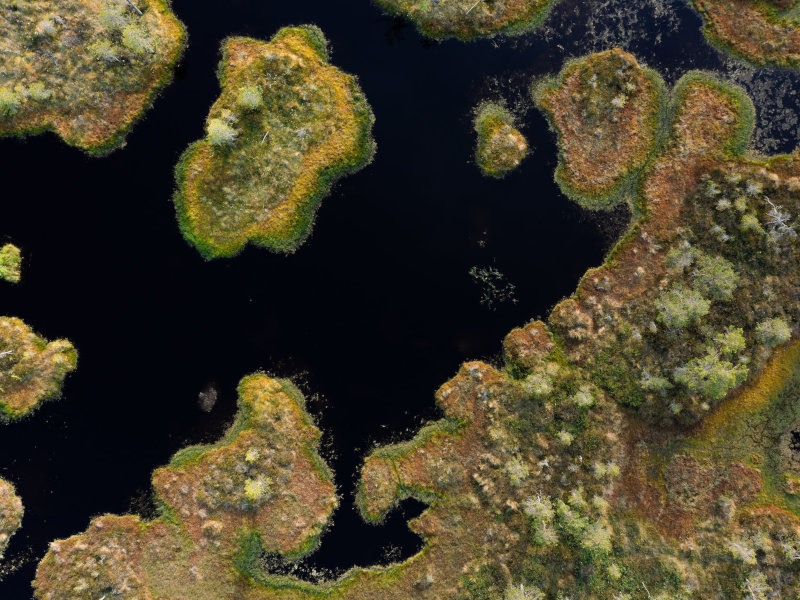
Restoring wetland sites across Europe
“WaterLANDS: Water-based solutions for carbon storage, people and wilderness” aims to enable an upscaling of the restoration of wetlands. Socio-economic factors, insufficient stakeholder engagement, lack of funding and inadequate exchange of knowledge of restoration methods have all been identified as barriers to successful restoration. Consequently, most restoration has been modest in scale, has occurred mainly where there is a single landowning or responsible organization, and has often been undertaken principally for reasons of conservation. To provide for local support and sustainability, WaterLANDS aims for the co-design of restoration with the on-going engagement of communities and stakeholders. It investigates best practice in ecological restoration which meets both biodiversity and social objectives and for which restoration trajectories are specific to the physical and cultural context of the Action Sites.
- Website: WaterLANDS
- Researcher: Carlo Giupponi
- Duration: 01/12/2021 - 30/11/2026
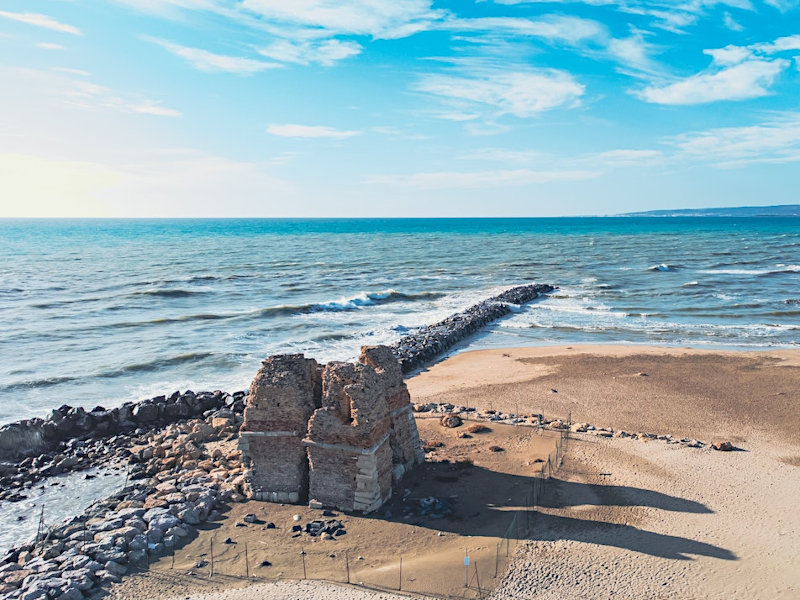
Large scale RESToration of COASTal ecosystems through rivers to sea connectivity
Nowadays it is necessary to consider some coastal problems such as the erosion/flooding during recent storms or the accelerating coastal habitat degradation that seriously affects fisheries and aquaculture. REST COAST aims to demonstrate to what extent upscaled coastal restoration can provide a low-carbon adaptation, reducing risks and providing gains in biodiversity for vulnerable coastal ecosystems, such as wetlands or seagrass beds. By overcoming present technical, economic, governance and social barriers to restoration upscaling, REST COAST develops large-scale river-coast connectivity and increases the nearshore accommodation space for the resilient delivery of coastal ecosystem services.
- Website: REST-COAST
- Researcher: Andrea Critto
- Duration: 01/10/2021 - 28/02/2026
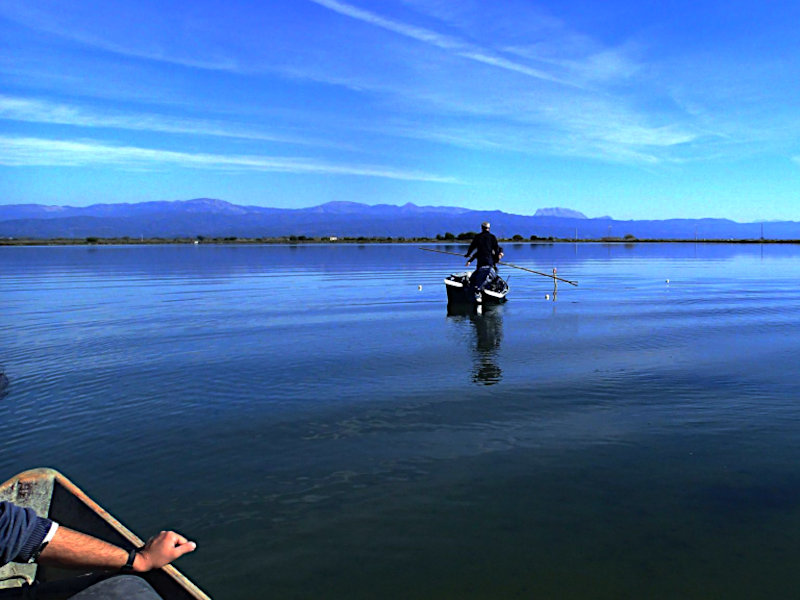
Seagrass transplanting in coastal lagoon
The project LIFE TRANSFER - Seagrass transplantation for transitional Ecosystem Recovery targets the habitat Coastal lagoons and its conservation status of habitat. Changes in hydrodynamic conditions after dredging one of its inlets caused the invasion and rapid expansion of the alga Caulerpa prolifera, accumulating organic matter and silt, to the detriment of the original Cymodocea nodosa meadows and its fauna (including more than 30 fish species like seahorses).Dredging and placement of breakwaters on beaches altered these conditions favoring the formation of sandbanks, the accumulation of detritus and the turbidity of the waters, reducing sandy habitats and seagrass meadows. The project aims to solve the drastic regression of submerged seagrass in habitat and the slowness with which this vegetation is able to colonize the area.
- Website: LIFE TRANSFER
- Researcher: Adriano Sfriso
- Duration: 01/12/2020 - 30/11/2025
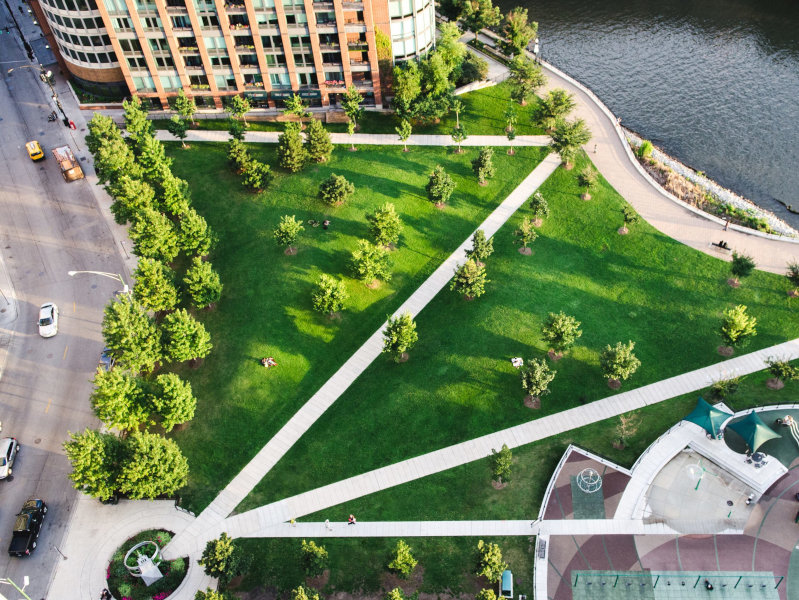
New climate services to support the Green Deal
European cities need support to build resilience to climate change. The project “REACHOUT - Resilience In Europe Through Activating City Hubs Reaching Out To Users With Triple-A Climate Adaptation Tools” aims to advance Climate Services for urban environments in 7 City Hubs across Europe, developing adaptation strategies integrated in climate resilient urban development. Serving as accelerators for regional and national upscaling, these hubs will serve as living labs for the co-creation of services with government, citizens and the private sector. The project will support engagement with municipalities, citizens and the private sector by implementing a Triple-A approach that has been successfully applied in the Dutch National Spatial Adaptation programme.
- Website: REACHOUT
- Researcher: Francesco Bosello
- Duration: 01/10/2021 - 01/10/2025

Digital technologies and home energy innovations
Nowadays due to the global energy crisis, the advancement of home energy innovation in Italy is a topic that needs to be addressed as soon as possible. DIGITA (DIGitalization for climate-resilient households. Advancing empirical evidence of home energy innovation in ITAly) studies whether and how digital technologies and home energy innovations increase Italian households' resilience concerning environmental risks, in the context of the transition towards a climate-neutral economy and the aftermath of the COVID19 pandemic. The results emerging from DIGITA will contribute to the design of novel policy interventions to increase Italian households' resilience through the use of digital home energy technologies in the context of the transition towards a net-zero economy and society.
- Researcher: Enrica De Cian
- Duration: 01/06/2022 - 31/05/2025
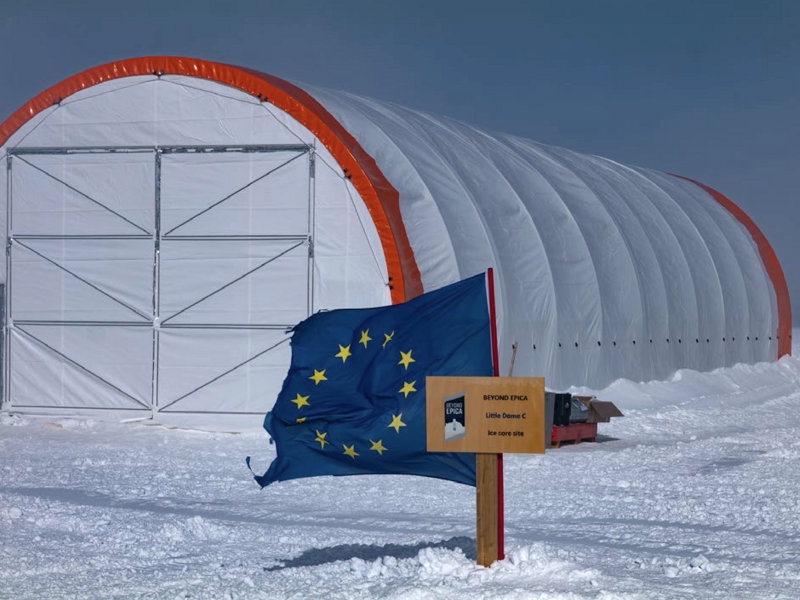
Going back in history for a better climate emergency comprehension
To better constrain the long-term response of Earth's climate system to continuing greenhouse gas emissions, it is essential to turn to the past: unravelling the key linkages between the carbon cycle, ice sheets, atmosphere and ocean behavior is vital, assisting society to design an effective mitigation and adaptation strategy for climate change. The project BE-OIC (Beyond EPICA Oldest Ice Core: 1,5 Myr of greenhouse gas – climate feedbacks) aims to obtain high-resolution, quantitative ice core information on climate and environmental change over the past 1.5 Myr. The cause and effect relationship that led to the change in the climate system is not understood yet, as important information on global changes in the climate system is still missing. This proposal offers an excellent team, underpinned by excellent infrastructure and capacity, and is currently ensuring it has an excellent location for the core.
- Website: Beyond EPICA
- Researcher: Barbara Stenni
- Duration: 01/06/2019 - 31/05/2025
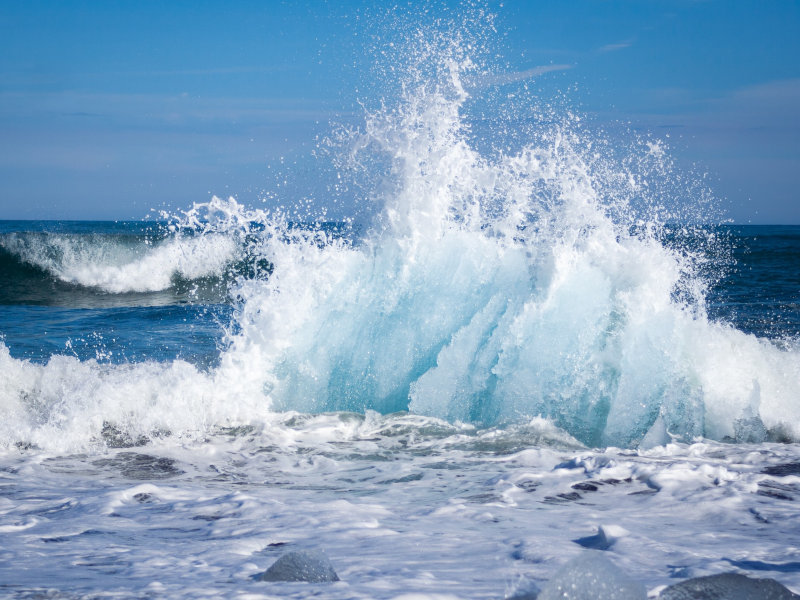
Sea level and extreme waves in the Last Interglacial
Understanding sea level changes and extreme wave intensity during the Last Interglacial (LIG) 125 000 years ago is key to assess the future of the world’s ice sheets and coastlines under warmer climatic conditions. The project “WARMCOASTS - Sea level and extreme waves in the Last Interglacial” aims to employ a multidisciplinary combination of methods to study Last Interglacial peak sea level, sea level variations and extreme waves. WARMCOASTS aspires to develop both new datasets and merge methods from geology, earth, surface processes and hydrodynamic modeling to advance the current state-of-the-art. The results of this project will be functional to better understand coastal processes under slightly warmer climate conditions.
- Website: WARMCOASTS
- Researcher: Alessio Rovere
- Duration: 01/11/2021 - 01/04/2025

PollinAction - Actions for boosting pollination in rural and urban areas
The objective of the project PollinAction is to mitigate the pollination crisis by creating a green infrastructure network, made up of natural and semi-natural areas, in rural and urban landscapes in North-East Italy. The project is mainly aimed at converting arable crops and rural or urban marginal areas into key habitats for pollinators. To reach this objective, it aims to improve species-poor grasslands and landscape heterogeneity by creating connectivity among rural and urban areas as well as along road infrastructure and riverbanks. The definition of an urban planning of compensation measures at local scale will be also considered as well as the design of circular economy processes and close-to-market solutions to boost farmer competitiveness. The project will be replicated in a marginalized and abandoned area in the Aragon region of Spain. This will allow the effectiveness of GI to be evaluated in two areas with opposite dynamics.
- Website: PollinAction
- Researcher: Gabriella Buffa
- Duration: 01/09/2020 - 31/03/2025
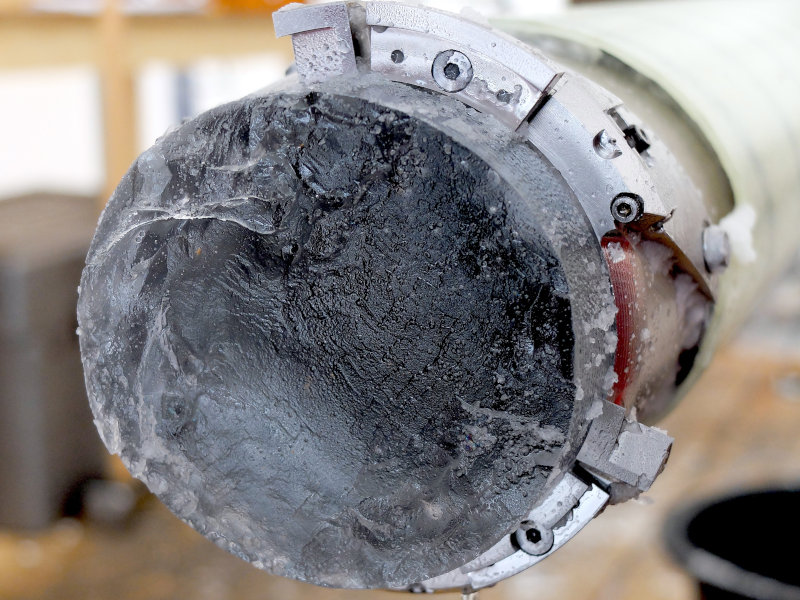
Analysis of selected stadial-interstadial transitions in Greenland ice cores
As one of the most important natural archives, polar ice cores have led to the discovery of past abrupt climate transitions, such as the abrupt onset of stadial-interstadial warming in Greenland. Laser-Ablation Inductively-Coupled Plasma Mass Spectrometry (LA-ICP-MS) is a key technology in this respect, offering micro-destructive ice core impurity analysis at micron scale-resolution. MICROCLIMATE (Micron-scale Ice Core Reconstruction of Abrupt Climate Changes) brings together, for the first time, two state-of-the-art LA-ICP-MS setups (at the Universities of Maine and Venice) to realize what one partner could not achieve alone: high throughput and high detail analysis for constraining signal preservation. The project will advance our understanding of how to interpret ice core geochemistry at high-resolution and produce a refined LA-ICPMS application that can be employed in upcoming ice core projects.
- Website: MICRO-CLIMATE
- Researcher: Pascal Bohleber
- Supervisor: Carlo Barbante
- Duration: 15/01/2022 - 14/01/2025
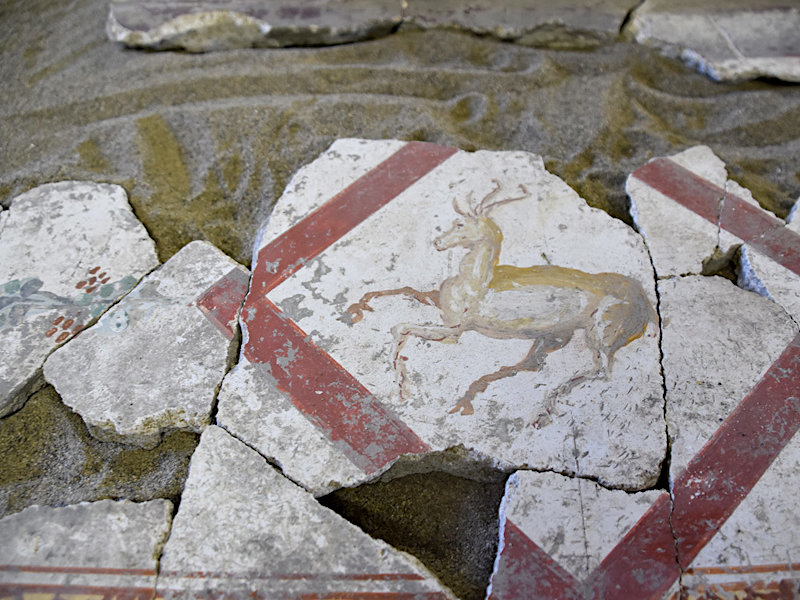
RePAIR - Reconstructing the Past: Artificial Intelligence and Robotics Meet Cultural Heritage
The reconstruction of small artifacts is typically done by experienced operators, possibly with the assistance of dedicated software, but when the number of fragments is large (say, of the order of thousands) manual or computer assisted restoration is simply hopeless. The project RePAIR develops an intelligent robotic system which will autonomously process, match and physically assemble large fractured artifacts at a fraction of the time it takes humans to do. By developing and integrating novel technologies in the fields of robotics, computer vision and artificial intelligence, we envisage a future where archaeology can deal effectively with reconstruction problems and be able to bring back to life ancient artworks which would otherwise remain broken into pieces forever.
- Website: RePAIR
- Researcher: Marcello Pelillo
- Duration: 01/06/2021 - 31/12/2024

Innovative research and training project in Antarctica
DEEPICE (Research and training network on understanding Deep icE corE Proxies to Infer past antarctiC climatE dynamics) aims to train a new generation of European researcher working on scientific issues related to climate change in Antarctica by taking advantage of the unique scientific dynamic of the new European ice drilling "Beyond EPICA'' which started in 2019 to extract a 1.5 million years old Antarctic ice core. The DEEPICE project will set up an innovative training program allowing the trained ESRs to acquire essential core and additional skills in instrumentation, ice core analysis, statistics and modeling, as well as a wide range of soft skills fostering their career perspectives. After having completed the training, DEEPICE’s ESRs will be fully equipped for engaging in academic and nonacademic careers related to glaciology, climate change, geophysics and instrumentation in geoscience
- Website: DEEPICE
- Researchers: Barbara Stenni, Carlo Barbante
- Duration: 01/01/2021 - 31/12/2024
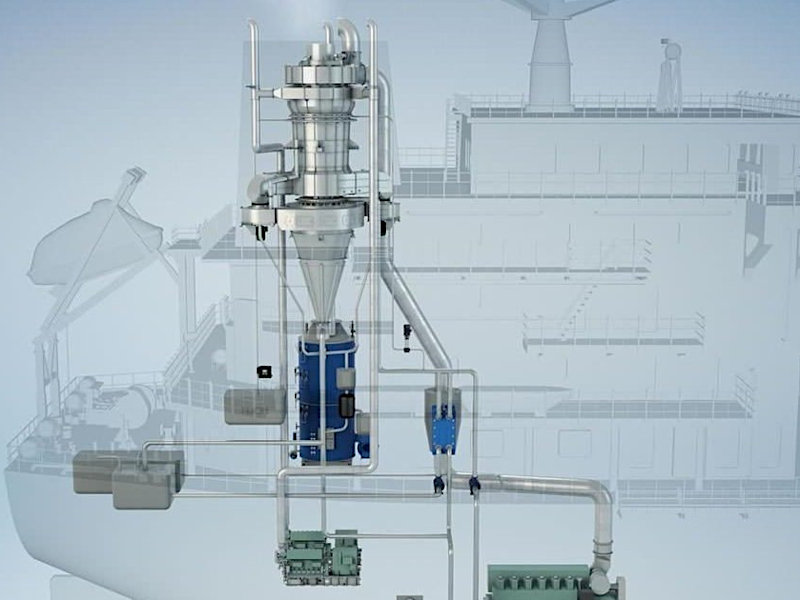
New strategies to address the environmental impacts of marine transportation
EMERGE (Evaluation, control and Mitigation of the EnviRonmental impacts of shippinG Emissions) aims to evaluate the effects of potential emission reduction solutions for shipping in Europe for several scenarios, and to develop effective strategies and measures to reduce the environmental impacts of shipping. The project collects and synthesizes experimental evidence on waste streams to water and emissions originating from ships in water, air and marine biota. EMERGE objectives will be achieved through real-world test cases involving measurements and modeling on actual vessels, along main shipping routes and in sensitive European marine regions: it includes five geographical case studies, in different ecologically vulnerable regions, and a mobile onboard case study.
- Website: EMERGE
- Researcher: Antonio Marcomini
- Duration: 01/02/2020 - 31/12/2024
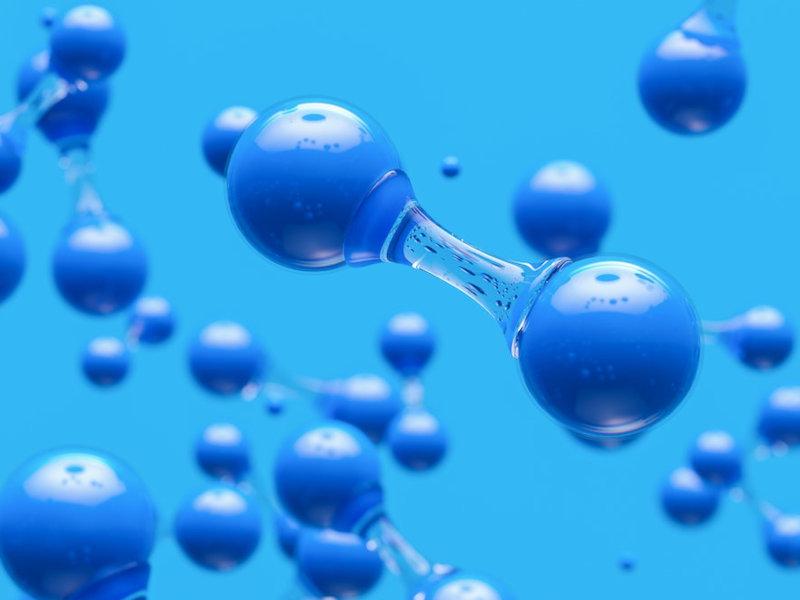
Ecofriendly hydrogen production in opposition to the global energy crisis
Sustainable solutions for the global energy crisis are firmly associated with seeking energy sources other than fossil fuel. In particular, the production of hydrogen through water splitting (WS) has been regarded as the greenest approach to power the globe. CoCaWS (Confined catalysis in layered materials - a transformational approach for efficient water splitting) aims at exploring new efficient catalysts for overall WS to tackle the problem of global energy crisis through ecofriendly hydrogen production. The project aims at solving the most critical problems such as catalytic functionality in neutral media for metals or alloys and poor basal plane activity in layered 2D materials. This will provide a significant stepping-stone in the quest for responding to the escalating demand of greenest energy sources.
- Website: Ecofriendly hydrogen production
- Researcher: Tofik Ahmed Shifa
- Supervisor: Alberto Vomiero
- Duration: 01/01/2022 - 01/04/2024

New technologies for low-cost wireless sensor networks
Atmospheric observatories are currently the primary infrastructure for the state-of-the-art meteorological and climate research. The aim of the project “PIONEER: OPen WIreless OzoNe SEnsor NEtwoRk for smart environmental monitoring of remote areas: crossing the Alps along the 12th east meridian on the trail Munich Venice” is to establish a low-cost sensors wireless sensor network (LCS-WSN) to assess the effectiveness of low-cost technologies in the study of transboundary transport phenomena and to develop a highly reliable LCS-WSN to be used by scientists as well as citizen engineers in remote areas and harsh environments. Given its highly relevance for the Earth’s climate, ecosystems, and human health, primary endeavor will be directed towards the study of Ozone.
- Website: PIONEER
- Researcher: Federico Dallo
- Supervisor: Carlo Barbante
- Duration: 01/01/2021 - 31/12/2023
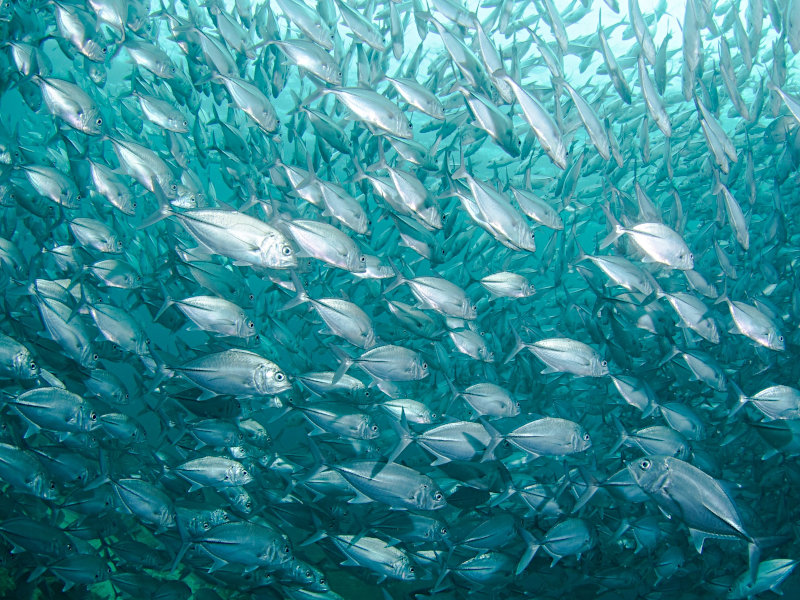
Strategies for a sustainable, resilient and innovative European aquaculture
The vision of the EU aquaculture industry is to grow substantially in the next decade and to provide 4.5 million tons of sustainable food products annually. To this aim, NewTechAqua project (New Technologies, Tools and Strategies for a Sustainable, Resilient and Innovative European Aquaculture) intends to expand and diversify EU production of finfish, molluscs and microalgae by developing and validating technologically advanced, resilient and sustainable new solutions. The organizational approach of NewTechAqua is to group the solutions in 6 different categories: feed, Industry 4.0, sustainable farming, genetics, new species and new products. They are validated on conventional (Atlantic salmon, rainbow trout, seabass and seabream) and emerging (greater amberjack, meagre, Senegalese sole and gray mullet) finfish species, molluscs (Pacific oyster, mussel) and microalgae.
- Website: NewTechAqua
- Researcher: Roberto Pastres
- Duration: 01/01/2020 - 31/12/2023
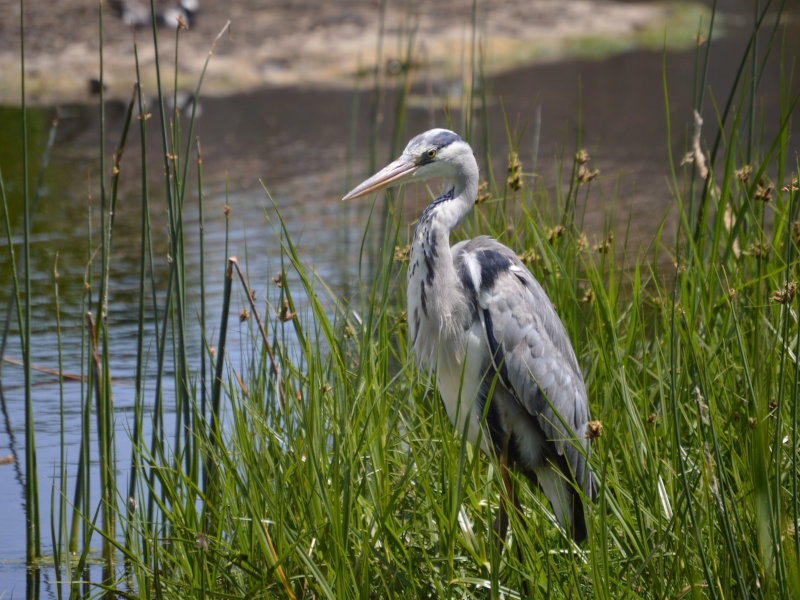
Restoring WWF Oasis of Valle Averto in the Venice Lagoon
The objective of LIFE FORESTALL (Restoration of Alluvial Forests and Cladium mariscus habitats in Ramsar and Natura 2000 sites) is to assess the impacts of the project conservation actions on the ecosystem’s functions and related ecosystem services in the study area: the WWF Oasis of Valle Averto, in the southern part of the Venice Lagoon, an environment of extraordinary naturalistic interest. The project conservation actions are in fact expected to enhance the provision of the multiple ES provided by the project area, thus contributing to meet the goals of the EU Biodiversity Strategy 2020, Target 2, which requires that ecosystems and their services are maintained and enhanced. The dredging of selected sectors of the existing channel network and the installation of new locks has been foreseen in order to improve the water quality and allow the regulation of the water levels, to guarantee the optimal conditions for resting and feeding of the birds during the winter and the migration period and to encourage the natural expansion of the project habitats.
- Website: LIFE FORESTALL
- Researcher: Fabio Pranovi
- Duration: 27/11/2020 - 30/11/2023

ConservePlants: a new project to protect fragile plants
Even though plants represent an essential part of our lives offering exploitational, supporting and cultural services, we know very little about the biology of the rarest and most threatened plant species, and even less about their conservation status. Rapid changes in the environment and climate affect their fitness and distribution causing rapid species declines, sometimes even before they had been discovered. The main aim of the project ConservePlants - An integrated approach to conservation of threatened plants for the 21st Century is to improve plant conservation in Europe through the establishment of a network of scientists and other stakeholders who deal with different aspects of plant conservation, from plant taxonomy, ecology, conservation genetics, conservation physiology and reproductive biology.
- Website: ConservePlants
- Researcher: Edy Fantinato
- Duration: 15/10/2019 - 14/10/2023
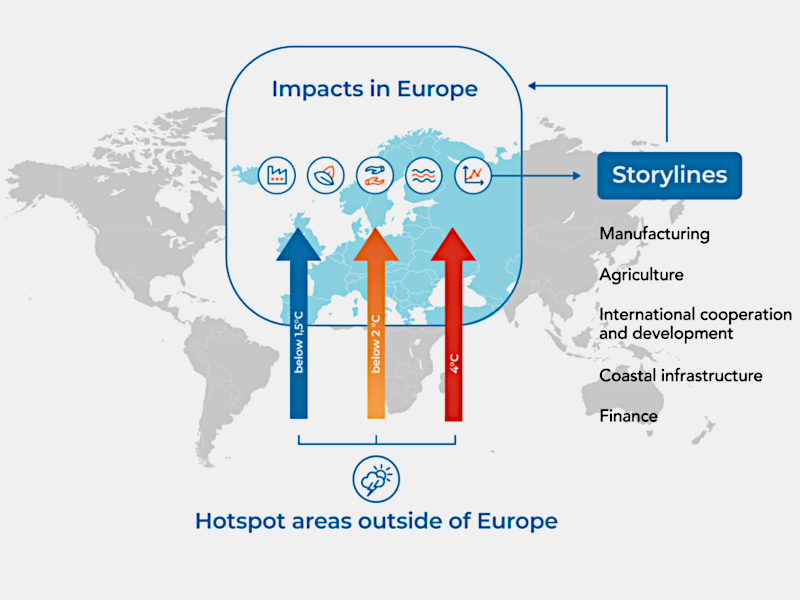
Delineating Europe’s vulnerability to remote climate events
In a globalized world, Europe’s economy is vulnerable to climate change impacts that occur beyond its border. Tropical cyclones, droughts and melting ice sheets in other parts of the world directly or indirectly impact Europe. The project RECEIPT (REmote Climate Effects and their Impact on European sustainability, Policy and Trade) aims to map these connections and to build storylines showing the effect of climate change on society and the economy. In order to provide relevant and quantitative information on the European risks from remote global climatic features, RECEIPT develops and implements a novel stakeholder driven storytelling concept that maps representative connections between European socio-economic activities and remote climatic hazards.
- Website: RECEIPT
- Researcher: Antonio Marcomini
- Duration: 01/09/2019 - 31/08/2023

Eco-friendly informations for tourism
Europe's tourist market relies on accurate and targeted information related to weather, climate and environment. WeCENT (Weather, Climate and Environmental information for Tourism) addresses many EU tourism policy challenges related to competition and advanced technology. It aims to develop innovative environmental products for the tourist industry for free and commercial distribution. The project measures user interests on environmental particularities, select and determine relevant climate and environmental information based on site, season and leisure activities, and translate Earth observation data into user-friendly information delivered to the user in a compact and timely form. The results of the project will provide innovative information to tourism actors and open new spaces for innovative applications based on satellite data.
- Website: WeCENT
- Researcher: Liliana Florentina Velea
- Supervisor: Alessandro Gallo
- Duration: 01/07/2021 - 30/06/2023
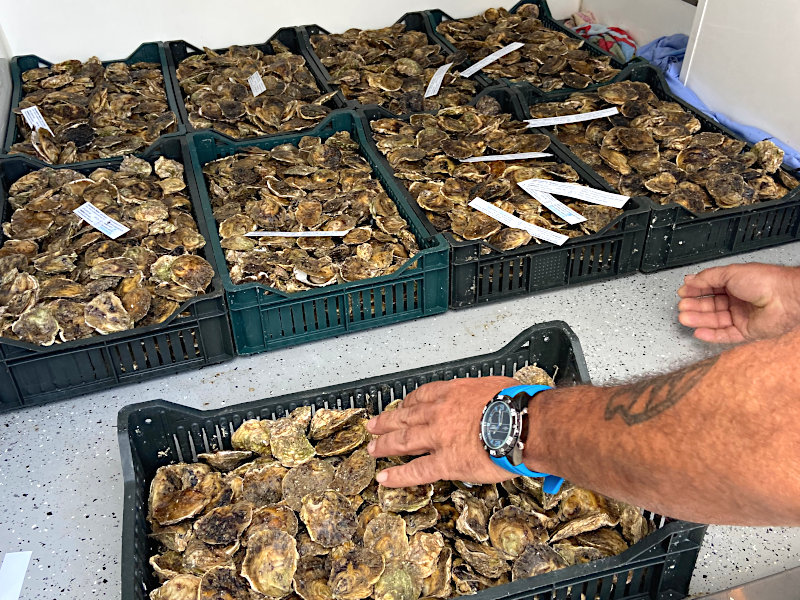
Strategies for a new chain of oyster farming
Aquaculture expansion is a necessary step to limit the reliance on wild fisheries and imports. Habitat restoration management can be integrated within aquaculture practices to limit their negative impacts and it can bring positive environmental changes while obtaining both economic and cultural returns. MAREA (MAtchmaking Restoration, Ecology and Aquaculture) aims to integrate restoration with aquaculture, namely the reintroduction of native flat Oyster reefs under mussels’ culture sites and harvest oyster spat recruiting as seeds in the original farm area to obtain economical returns and start a local oyster farming chain, while leaving the reef intact to provide ecosystem services. The main aim is to identify suitable areas and best practices for this integration, in terms of size, stock densities and environmental conditions necessary to obtain maximum benefits in terms of both harvestable product and ecosystem services.
- Website: MAREA
- Researcher: Camilla Bertolini
- Supervisor: Roberto Pastres
- Duration: 01/07/2021 - 30/06/2023

ENERGYA - Energy Use for Adaptation
The project aims to improve our understanding of how energy and energy services can be used by households and industries to adapt to the risk posed by climate change. Specifically, ENERGYA wants to develop an interdisciplinary and scalable research framework integrating data and methods from economics with geography, climate science, and integrated assessment modeling to provide new knowledge concerning heterogeneity in energy use across countries, sectors, socioeconomic conditions and income groups, and assess the broad implications adaptation-driven energy use can have on the economy, the environment, and welfare. The main objective is to produce novel statistical and econometric analyses for OECD and major emerging countries (Brazil, Mexico, India, and Indonesia) to shed light on the underlying mechanisms driving energy use.
- Website: ENERGYA
- Researcher: Enrica De Cian
- Duration: 01/03/2018 - 28/02/2023

Enhancing sustainable development policy between countries
The Paris Agreement, adopted at the end of 2015, affirms the urgency to tackle climate change and foster a climate resilient and inclusive low-carbon development. The pledge-and-review approach launched by the Agreement requires more than 190 States to periodically update their climate plans toward more ambitious actions. The project ACTION (Assessing Climate TransItion OptioNs: policy vs impacts) aims at enhancing transparency and comparability among countries’ climate change policies while offering insights into a fair and just transition toward sustainable development. By assessing the effectiveness of current measures and by identifying successful elements and obstacles, ACTION will support the EU and its Member States to better design their future climate agenda.
- Website: ACTION
- Researcher: Marinella Davide
- Supervisor: Enrica De Cian
- Duration: 01/02/2020 - 31/01/2023
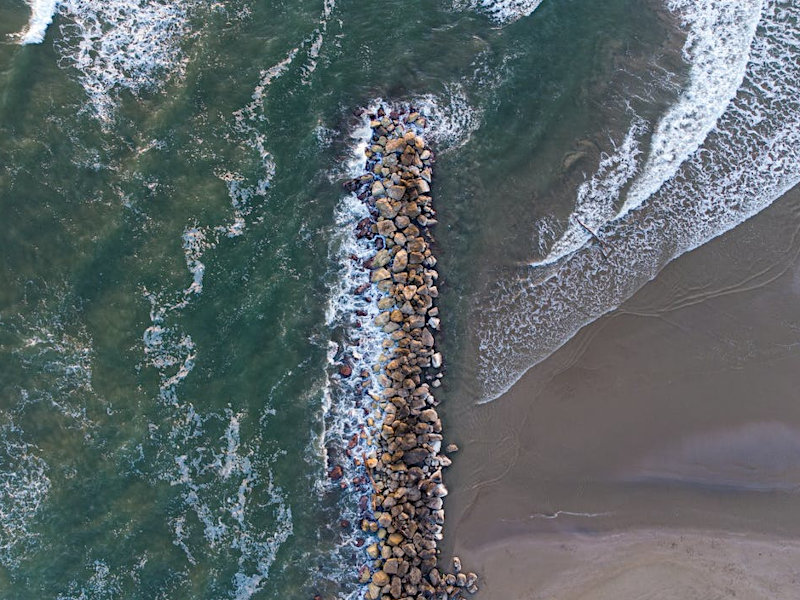
Climatic change strategies in Adriatic coastal areas
The Adriatic coastal and marine areas are particularly vulnerable to climate-related risks. In particular, the sea surface temperature of the Adriatic Sea will increase by about +1.5/1.6°C in 2050 and sea level will increase by +7 cm with consequent negative impacts on coastal areas and marine ecosystem services. The project AdriaClim (Climate change information, monitoring and management tools for adaptation strategies in Adriatic coastal areas) will develop, consolidate and enhance climate monitoring systems and innovative data handling for fostering knowledge and cooperation for adaptation strategies planning in coastal and marine environments, built also upon cross-border cooperation between Italy and Croatia.
- Website: AdriaClim
- Researcher: Andrea Critto
- Duration: 06/10/2022 - 31/12/2022
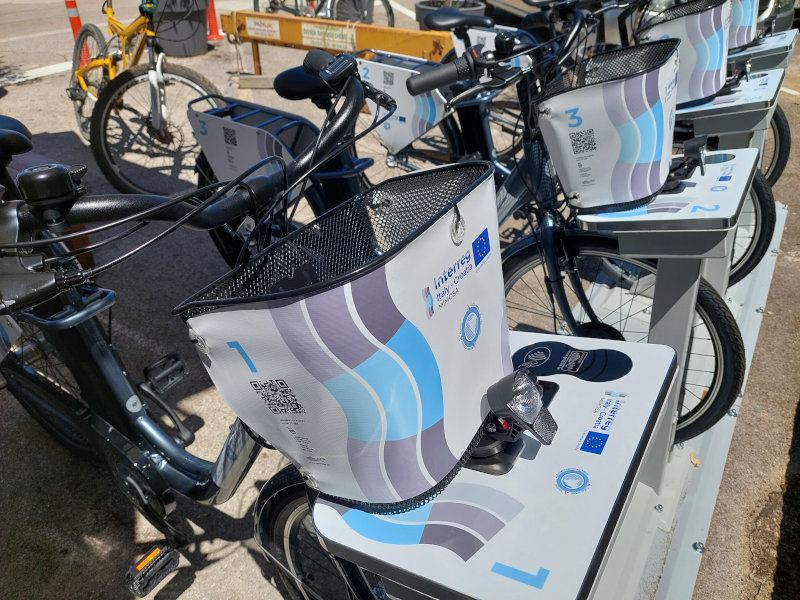
Sustainable passenger transport solutions in Italy and Croatia
MIMOSA project (MarItime and MultimOdal Sustainable pAssenger transport solutions and services) aims at improving the offer of multimodal sustainable passengers’ transport solutions and services and promotes a new cross-border approach for passenger mobility in the Programme area (Italy and Croatia). The project partnership, composed by the main actors at regional and national level in both countries, is determined to jointly tackle the common challenge of increasing multimodality, reducing the impact of transport on the environment. Having a result-oriented approach, in developing visible outputs, ranging from multimodal solutions to innovative and smart tools and technologies, MIMOSA is focused to change the current situation affecting the cross border and regional connections, making more accessible, low-carbon and sustainable the mobility of passengers in the whole Programme area.
- Website: MIMOSA
- Researcher: Andrea Stocchetti
- Duration: 01/05/2020 - 31/12/2022
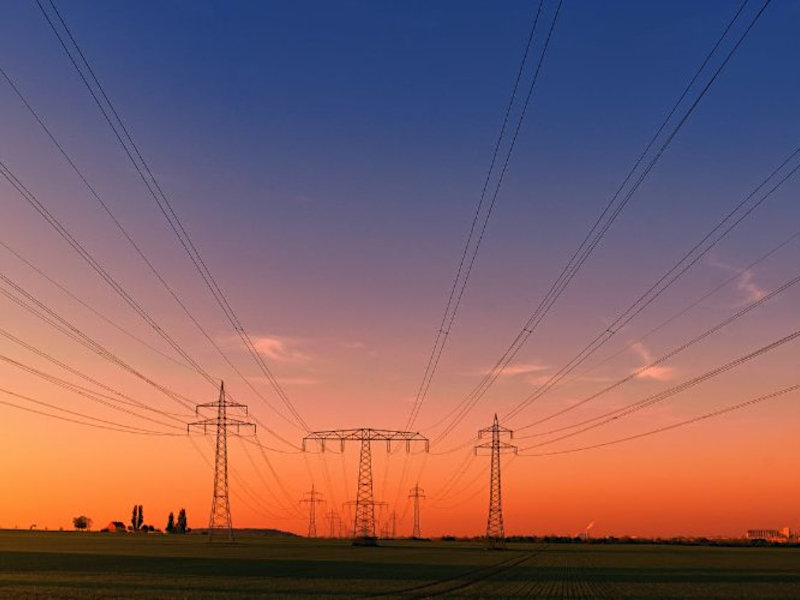
A new energy model for sustainable development in Ethiopia
In the era of sustainable development, the source, the type, and the mix of energy are as important as access to energy. This is particularly important in least developed countries such as Ethiopia which heavily relies on traditional biomass energy sources. This in turn contributes to indoor air pollution which causes more than 50,000 deaths annually and nearly 5% of the burden of disease in the country. In Ethiopia, investment in energy transition has many implications for the economy (e.g. on total factor productivity, structural change, trade balance), the environment (e.g. deforestation and soil fertility), and human health (e.g. indoor air pollution). The project MEND (Modeling Energy for Sustainable Development in Ethiopia) primarily intends to fill these appealing gaps, and examine the environment-energy-economy inter-linkages in Ethiopia using partial equilibrium energy model and an economy-wide general equilibrium model.
- Website: MEND
- Researcher: Amsalu Woldie Yalew
- Supervisors: Carlo Carraro, Francesco Bosello
- Duration: 15/11/2020 - 14/11/2022
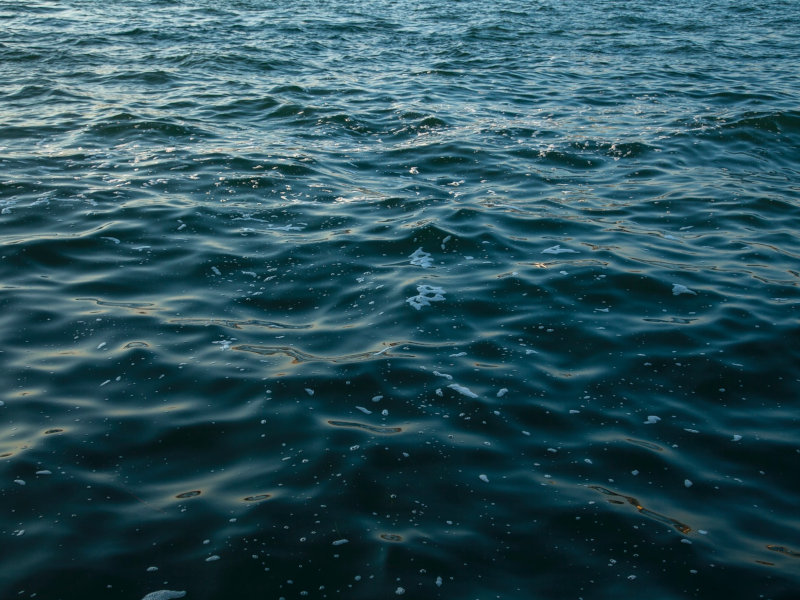
Effects of Climate Change in the Mediterranean Sea
The project “ICCC - Impact of Climate Change on the biogeochemistry of Contaminants in the Mediterranean Sea” proposes an innovative and systematic analysis on the effects of climate change on the Mediterranean circulation, the distribution of plankton and the distribution and chemical speciation which induce toxic effects on the ecosystem. An ensemble of numerical models is used to simulate the evolution of hydrodynamic and biogeochemical variables up to 2100 and to investigate and quantify, supported by a wide spectrum of laboratory and in-field experiments, the effects of climate change on the chemical speciation in seawater. Results will include space distribution maps of physical, biogeochemical, and contaminant properties for several representative climatic scenarios. The integration of lab and field observations with deterministic and stochastic models coupled to oceanographic models will provide an innovative approach to capture and investigate the biogeochemistry and bioavailability of priority chemical species and assess cumulative impact of climate and pollution.
- Researcher: Gabriele Capodaglio
- Duration: 03/11/2019 - 03/11/2022
